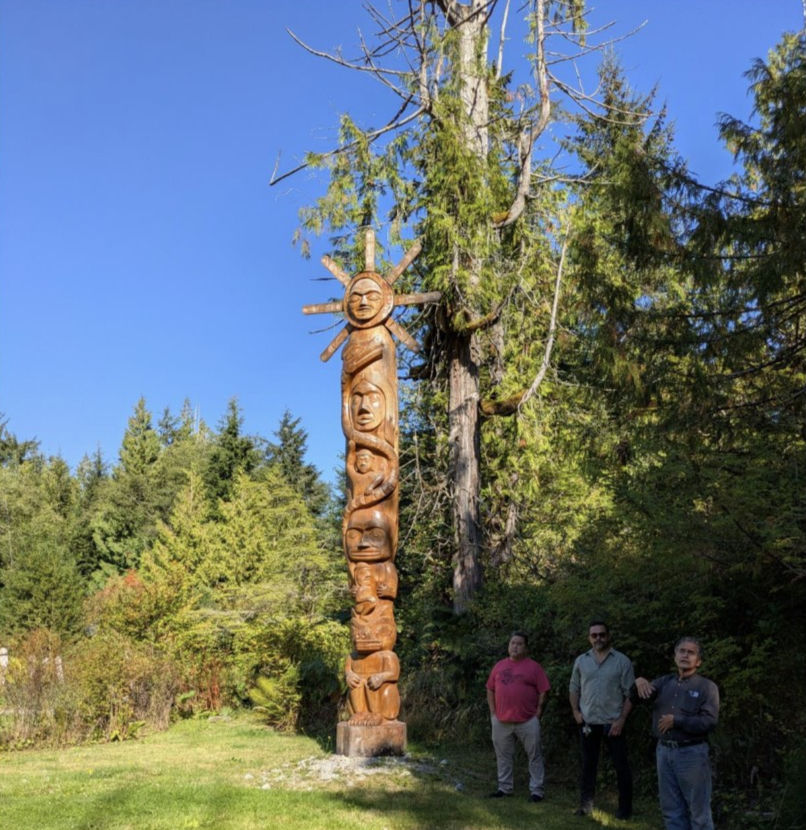Indigenous Protected and Conserved Area (IPCA) Teachings from Tla-o-qui-aht Territory
- shah3278
- Sep 26
- 3 min read
Wahkohtowin is leading the way with knowledge extension and organizational/partner learning on how IPCA's can be a tool in growing cultural revitalization and economic sovereignty.

....."Indigenous Protected and Conserved Areas provide Nations with a holistic, alternative vision to land stewardship by exerting their self-determination"......
From September 15th to 19th, Wahkohtowin staff, Carly and Elena, attended a field course about Indigenous Protected and Conserved Areas (IPCAs) in Tla-o-qui-aht territory on Vancouver Island. The field course is the introductory portion of the broader IPCA Planning Certificate program offered by Vancouver Island University in partnership with the IISAAK OLAM foundation.

This is the fourth year that this program has been offered, and the first time the cohort of students has been mostly Indigenous! Being a part of this program has allowed our staff to form relationships with a network of professionals working on behalf of their Nations from coast to coast.
The field course provided attendees with foundational knowledge about IPCAs by utilizing the Tla-o-qui-aht Tribal Parks as a case study. We were privileged to learn from Tla-o-qui-aht Knowledge Holders, Elder Joe Martin, Seitcha (Terry Dorward), and Eli Enns, all of whom have first-hand experience declaring, planning, and stewarding IPCAs.
Governed by a 500-year stewardship plan, Tla-o-qui-aht Tribal Parks declarations commenced in 1984 to prevent clear-cut logging of old-growth forests on Meares Island. In November 1984, the Tla-o-qui-aht formed a welcome party for loggers arriving on the island. They greeted them with a meal and told them about the land they were on, stating “this is our garden”.
Activists took legal action, exerted Indigenous governance, and peacefully blockaded the area for months. This led to Wanačas Hiłḥuuʔis (Wa-na-chas Hilth-huu-is) being the first Tribal Park in Canada, having been declared in Natural Law, Indigenous Law, and eventually the Canadian Courts. It was followed by three more to eventually encompass all of their traditional territory.

Core Insights
Indigenous Protected and Conserved Areas provide Nations with a holistic, alternative vision to land stewardship by exerting their self-determination
The area outlined on the map is just one very small part of the whole
Bringing back place names in the language and utilizing the language is essential to the process
Shifting our focus from what we don’t want (i.e., resource extraction), to what we want instead
Moving towards a different economic system, how can we become economically independent, in order to be politically sovereign? For example, The Tribal Parks Allies program works with local businesses in the territory to contribute an ecosystem services tax to go towards stewardship of the Parks
Healing is integral to IPCAs, healing the individual, the community, and the land
Since IPCAs are a decolonizing model of planning, it is important for community to announce/declare an IPCA regardless of government support

Bringing Our Knowledge to Wahkohtowin
Moving forward in our own work at Wahkohtowin, we can apply and share the knowledge gained during the field course and accompanying virtual courses with our staff and our Owner Nations.
We can use IPCAs as a tool for our decolonial conservation goals by providing long-term vision to our projects, such as the Height of Land Ecological Corridor
The field course has encouraged us to think bigger and more holistically about how to care for the land and communities
It has reminded us of the importance of language and place name revitalization.
We have created relationships with other people and organizations pursuing similar projects who may be future collaborators or supporters - “sister IPCAs”
Our visit to the Tla-o-qui-aht Tribal Parks has given us a renewed sense of hope and has showed us that it can be done!
Wrap It up!
Carly and Elena will be completing the full certificate program over the next several months. In addition, a group of Wahkohtowin, Mushkegowuk, and Lands Department staff are taking an accelerated version of the training, including auditing Course 6 of the program, Planning for IPCAs. ƛ̓̓eekoo ƛ̓eekoo, Chi-Miigwetch to Vancouver Island University and the IISAAK OLAM foundation for allowing our team to benefit from the knowledge and teachings shared in this program. We look forward to applying what we’ve learned to the Height of Land Ecological Corridor and other conservation work going forward.
Author: Elena McCulloch, Carly Jackson





Comments